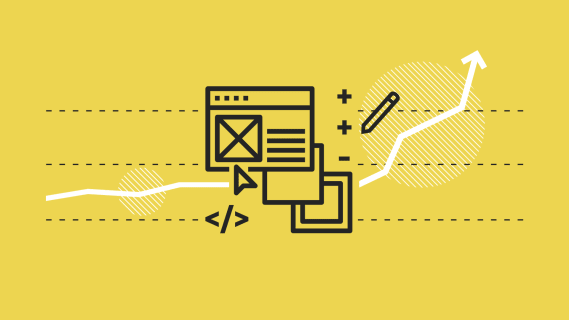Software Testing and Quality Assurance services: Insights from Boldare
Software users expect a seamless experience when using your products, whether it’s an e-commerce platform or a high-end, AI-powered B2B industrial application that runs heavy machinery. That’s why software testing and QA are the cornerstones of every product we create at Boldare. Our methods are tailored to meet the specific needs of each project, ensuring that we deliver the best possible product to our clients. In this article, I will share insights from my experience as a QA engineer at Boldare, touching on various aspects of our work, including the challenges we face and the tools we use.

Table of contents
Challenges we solve
At Boldare, our QA services are integral to the success of our projects.
As with any other service, we don’t adhere to a one-size-fits-all approach - it simply doesn’t work.
Instead, we adapt to the unique requirements of each project and team. Whether it’s acceptance testing, regression testing, or end-to-end test automation, our goal is to ensure that the software functions correctly and meets the client’s expectations. Most importantly, we aim to help users navigate the software without frustration, thereby supporting our clients’ brands and revenue streams.
Adapting to Teams and Product Needs
One of the primary challenges we face is adapting to teams and product needs. Each project has its own dynamics, and the role of QA must be flexible to fit seamlessly within the team. This means understanding the product’s requirements, the development team’s workflow, and the client’s expectations. In my experience, this adaptability is crucial for effective quality assurance. We can’t afford to be rigid in our methods; instead, we must be agile and responsive to the needs of the project.
Problems with acceptance at various stages
Problems with acceptance at various stages of the development process can be a significant hurdle. Acceptance criteria must be clearly defined and understood by all team members to avoid discrepancies. As a QA engineer, I often find myself bridging the gap between the product owner (PO) and the development team. This involves ensuring that the acceptance criteria are well-documented and that any ambiguities are clarified before development begins. By doing so, we can reduce the likelihood of issues arising during the final stages of testing.
Technical debt
Technical debt is an inevitable part of software development. It refers to the shortcuts or compromises made during development that can lead to future problems. At Boldare, we aim to minimize technical debt by maintaining high standards of quality from the outset. This involves regular code reviews, thorough testing, and continuous integration practices. However, when technical debt does occur, it’s essential to address it promptly to prevent it from accumulating and causing more significant issues down the line.
Lack of documentation in existing projects
Lack of documentation in existing projects is another common challenge. When documentation is lacking, it can be difficult for the team to understand the system’s functionality and architecture. This can lead to inefficiencies and errors in testing. To mitigate this, we make it a priority to document our testing processes and results thoroughly. Additionally, we often collaborate with the development team to create or update documentation, ensuring that everyone has a clear understanding of the system.
The role of QA in a product development team
The role of QA in a product team is multifaceted. We are not just testers. We are also advocates for quality throughout the development process. This involves working closely with the PO and the development team to define clear acceptance criteria and ensure that these criteria are met. We also play a crucial role in identifying potential issues early in the development cycle, which can save time and resources in the long run.
Acceptance testing and acceptance criteria
Acceptance testing is a critical part of our QA process. This involves verifying that the software meets the predefined acceptance criteria before it is released to the client. Clear and comprehensive acceptance criteria are essential for this process. As a QA engineer, I work closely with the PO to define these criteria and ensure that they are understood by the development team. By doing so, we can ensure that the final product meets the client’s expectations and functions as intended.
Regression and manual vs. automated testing
Regression testing is another vital aspect of our work. This involves verifying that new changes to the software, such as adding new features, do not introduce new issues. We use a combination of manual and automated testing for this purpose. While manual testing allows us to catch subtle issues that automated tests might miss, end-to-end test automation is essential for efficiency and consistency. By automating repetitive tests, we can focus our manual testing efforts on more complex and high-risk areas of the software.
Processes and optimization of the QA team’s workflow
Effective processes and optimization of the QA team’s work are crucial for ensuring high-quality software. This involves continuous improvement of our testing methods, tools, and workflows. We regularly review our processes and seek feedback from the development team to identify areas for improvement. By doing so, we can ensure that our QA efforts are efficient and effective, ultimately leading to better software quality.
Collaboration between QA, PO, and the development team
Collaboration between QA, PO, and the development team is essential for successful software development. Clear communication and cooperation between these roles ensure that everyone is aligned on the project’s requirements and quality standards. As a QA engineer, I often act as a liaison between the PO and the development team, making sure that any issues or ambiguities are addressed promptly. This collaborative approach helps to prevent misunderstandings and ensures that the final product meets the client’s expectations.

Collaboration between QA and Product Designer
Collaboration between QA and Product Designers is crucial for ensuring that the project meets both technical and user experience standards. In the absence of a dedicated project manager, the QA engineer often takes on a role that bridges the gap between the Product Owner (PO) and the development team. This means that QA needs to have a deep understanding of the business requirements and ensure that the tasks are clearly defined and understood by all team members. Product Designers, who focus primarily on the user experience, might not always have the technical vocabulary needed to convey their ideas effectively to developers. Here, the QA engineer can step in, clarifying any ambiguities and ensuring that both the design and implementation meet the expected quality standards. By collaborating closely from the beginning, QA and Product Designers can help prevent issues from arising later in the development process, ensuring that the final product aligns with both business goals and user needs.
The impact of QA on technical debt
The impact of QA on technical debt cannot be overstated. By maintaining high standards of quality throughout the development process, we can help to minimize technical debt. This involves regular code reviews, thorough testing, and continuous integration practices. When technical debt does occur, it’s essential to address it promptly to prevent it from accumulating and causing more significant issues down the line. By doing so, we can ensure that the software remains maintainable and scalable in the long term.
Tools and frameworks used by QA
At Boldare, we utilize a variety of tools and frameworks to enhance our QA efforts. These include automated testing tools, continuous integration systems, and project management software. Here’s our toolset—these are the most popular tools within our community, although everyone has their own favorites.
E2E Automation Related:
- Playwright: A Node.js library that enables end-to-end testing for modern web applications. It supports multiple browsers and allows for cross-browser testing.
- Cypress: A front-end testing framework designed for modern web test automation. It provides an easy-to-use interface and real-time reloads, making it popular for end-to-end testing.
- Selenium: A widely-used framework for automating web applications across different browsers. It supports multiple programming languages and offers a suite of tools for test automation.
- Appium: An open-source tool for automating mobile applications. It supports native, hybrid, and mobile web applications on iOS and Android.
BDD Related:
- Behat: A PHP framework for Behavior-Driven Development (BDD). It allows you to define and execute tests that describe the behavior of an application in a human-readable format.
- Cucumber: A tool that supports BDD, allowing developers to write tests in plain language (Gherkin). It can be integrated with various programming languages and supports both web and API testing.
- Robot Framework: A generic test automation framework that supports both keyword-driven and behavior-driven testing. It is widely used for acceptance testing and acceptance test-driven development (ATDD).
Load and Performance Testing:
- K6.io: A modern load testing tool that helps developers and testers evaluate the performance of APIs and websites. It offers a scripting API for creating test scenarios.
- artillery.io: A powerful, easy-to-use load testing toolkit for HTTP, Socket.io, and other protocols. It allows developers to simulate user traffic to test the performance and scalability of their applications.
- locust.io: An open-source load testing tool that allows you to define user behavior with Python code and simulate millions of simultaneous users.
- gatling.io: A high-performance load testing tool that uses Scala to create complex test scenarios and analyze web application performance.
- Lighthouse: An open-source tool developed by Google for auditing web pages. It provides insights into performance, accessibility, SEO, and more.
API Testing Related:
- Postman: A popular tool for API development and testing. It allows users to send requests, inspect responses, and automate API tests.
- Insomnia: A user-friendly API testing tool that supports REST, GraphQL, and other API formats. It features a simple interface and advanced capabilities for testing and debugging APIs.
- Bruno: An API testing tool that focuses on collaborative workflows and supports features like real-time testing and team collaboration.
- Rest Assured: A Java library used to simplify testing of RESTful web services. It provides a domain-specific language for making requests and validating responses.
Other Tools:
- Charles Proxy, mitmproxy: Tools for monitoring and debugging network traffic. They act as a proxy server that captures and displays HTTP/HTTPS traffic between your computer and the internet.
- Qase.io, Testrail, qTest: Test management tools that provide a centralized platform for managing test cases, executing tests, and tracking results.
- SonarQube, Sentry: Quality management and monitoring tools. SonarQube analyzes code for bugs, vulnerabilities, and code smells, while Sentry is used for real-time error tracking and performance monitoring in production environments.
The importance of QA in ensuring product quality
In conclusion, the significance of QA in ensuring product quality cannot be overstated. As QA engineers, we play a crucial role in verifying that the software meets the client’s expectations and functions as intended. This involves a combination of manual and automated testing, clear communication and collaboration with the PO and development team, and continuous improvement of our processes and tools. By doing so, we can ensure that the final product is of the highest quality and meets the needs of the client.
In my opinion, the role of QA in a project team is not just about finding bugs but about advocating for quality at every stage of the development process. From my experience, effective QA can save time and resources, minimize technical debt, and ultimately lead to better software quality. At Boldare, we take pride in our comprehensive approach to QA and software testing, and we are committed to delivering the best possible products to our clients.
Share this article:









